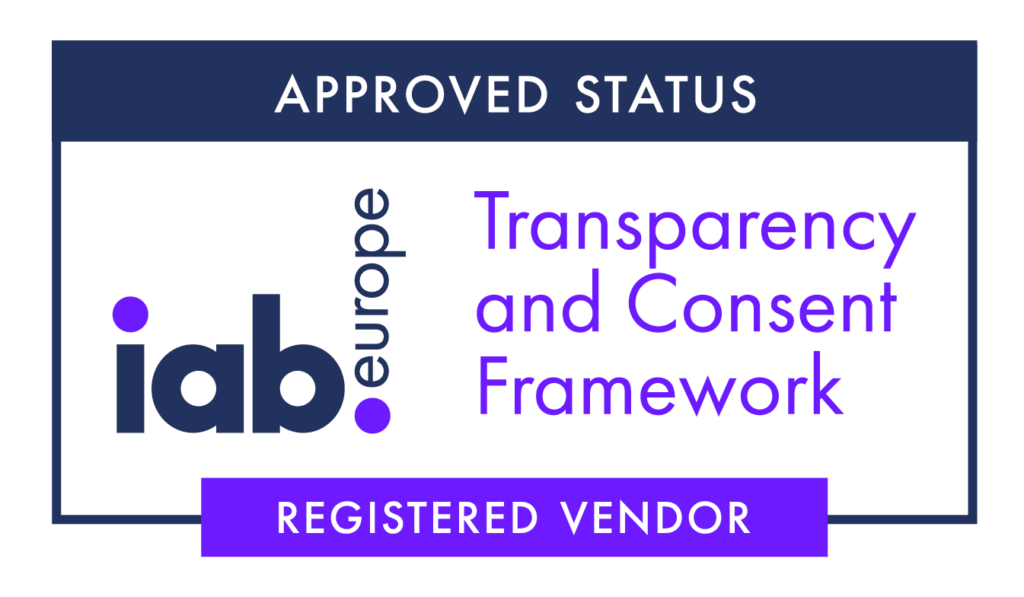In today’s hyper-competitive B2B landscape, it’s not enough to cast a wide net and hope for the best. Targeted, personalised B2B Display Advertising campaigns are the key to standing out in a crowded marketplace.
However, the increasing difficulty of tracking user behaviour due to changing privacy laws and the phasing out of third-party cookies or B2B decision-making more complex than ever, with multiple stakeholders involved in the process, make it very challenging. That’s where Account-Based Advertising (ABA) comes in. In this ultimate guide, we’ll show you why ABA is an essential tactic for B2B marketers looking to drive revenue growth, and how you can use it to build trust, engage key stakeholders, and win more business.
What is Account-Based Advertising?
Account-Based Advertising (ABA) is a marketing strategy that targets specific companies with personalised advertising campaigns. Rather than targeting a broad audience, ABA focuses on a specific set of accounts that fit a particular profile. This approach is highly effective in reaching high-value customers.
The process of ABA typically involves compiling a list of companies to target, researching , creating relevant messaging and using targeted advertising channels to deliver the message to the right people at the right time.
Types of Account-Based Advertising
In B2B marketing, there are 3 different types of account-based advertising. While very similar in implementation, they differ in the number of accounts that are being targeted.
- One-to-One
Often called Bid Support, a one-to-one Account-Based Advertising campaign is highly tailored and targets only one company. Because targeting individual accounts is time-consuming and expensive, this type of ABA campaign is typically reserved for targeting high value accounts that will bring in significant revenue. The strategy and messaging can be tailored to the unique pain points, motivations and requirements of the chosen account, which increases the effectiveness of your campaign significantly.
- One-to-Few
In a one-to-few account-based advertising campaign a small number of accounts are chosen based on common characteristics. This type of ABA campaign strives to find a middle ground between the effectiveness of a highly personalised campaign and the reach and affordability of a broadly targeted campaign. By grouping target accounts together using common characteristics you can reach more accounts with messaging that still resonates with each one. Account Based Marketing programs usually start here.
- One-to-Many
While a one-to-many campaign tends to have a broad messaging ( ie. either pure awareness or vertical/ industry driven ) it increases the affordability and reach. This type of Account-Based Advertising campaign is ideal for targeting a large number of accounts to identify which ones are in the market for your products. Once an account shows interest, it can be moved into a one-to-few campaign to receive more personalised communication.
Deciding which of these is right for your campaign depends largely on your objectives, your budget and the maturity of your ABM strategy. Each has its place and can help you reap great rewards if used correctly.
What’s the difference between Account-Based Advertising and Account-Based Marketing?
Account-Based Advertising (ABA) and Account-Based Marketing (ABM) are two closely related strategies, but they have some key differences.
Account-Based Advertising is a subset of Account-Based Marketing that specifically refers to the use of advertising channels to target specific accounts or companies. It’s a more focused approach to advertising that involves creating highly personalised campaigns for a small number of target accounts. The goal of ABA is to increase brand awareness, generate leads, and drive revenue by reaching key decision-makers within these accounts.
On the other hand, Account-Based Marketing is a broader strategy that encompasses a range of tactics and channels, not just advertising. ABM involves identifying a small number of high-value accounts, researching their specific needs and challenges, and creating personalised marketing campaigns and messaging to address those needs. ABM often involves a mix of marketing channels, including email marketing, content marketing, social media, and events.
While Account-Based Advertising focuses on using advertising channels to reach target accounts, ABM takes a more holistic approach that involves a range of marketing tactics. ABA can be seen as a tactical component of an overall ABM strategy. Both approaches aim to target specific high-value accounts and personalise messaging to those accounts, but the difference lies in the specific channels and tactics used to achieve those goals.
How does Account-Based Advertising work?
Account-based advertising is a fundamentally smart way to target selected companies when their employees are at the office reading media and news relevant to their job.
This level of targeting allows for higher relevance in the communication, you can tailor your banners to specific industry solutions and even specific pain points at company level! This level of relevance is really impossible to attain with traditional digital.
Instead of delivering content that’s relevant to an individual based on the geography, gender or age with Account Based Advertising the content is delivered on the fact that the target works at a particular company.
This strategy relies on advertisers working with really tiny audiences and a handful of relevant media publications (typically IT or Finance related as example), so impressions are highly relevant. The corollary is that unit prices for impressions are also higher as you micro-target and ABA solutions typically need to out-bid any other concurrent digital strategy to ensure your banners are displayed.
There are many companies offering solutions for Account Based Advertising. The majority have a strong footprint in the US, where the industry is more mature and, more importantly, the abundance of cookie based data helps in profiling the right contacts. Alas, some markets such as the EU, with its global data protection legislation (GDPR) and the advertising industry as a whole, moving away from cookies, have opened a new avenue to companies like AccountInsight which have a global footprint and a core technology developed with privacy and B2B media at heart.
Who should be using Account-Based Advertising?
Account-Based Advertising (ABA) is typically used by B2B businesses. It can be used for both those that sell high-value products or services to a relatively small number of target accounts but also for companies selling across large industry verticals. The technology is mature enough to support all B2B digital display communication.
ABA can be beneficial for businesses that have a long and complex sales cycle, as it allows them to target decision-makers within a small number of accounts and build relationships over time. It can also be useful for businesses that operate in a competitive market, as it allows them to differentiate themselves by creating highly personalised campaigns that speak directly to the needs of target accounts.
The steps to take to implement an effective Account-Based Advertising strategy
Implementing an effective Account-Based Advertising (ABA) strategy involves several key steps:
- Define your target accounts: Identify a list of companies that fit your ideal customer profile. Consider factors such as company size, industry, and revenue.
- Research your target accounts to understand their business needs, pain points, and buying process. This information will help you create more personalised messaging and content.
- Develop personalised messaging: Use the insights gained from your research to create messaging and content that speaks. Relevance is key to the success of ABA.
- Choose your advertising channels: Identify the most effective advertising channels for reaching your target accounts. These may include social media, display ads, or other targeted advertising channels.
- Create your advertising campaigns: Create highly targeted and personalised campaigns for each target account. This may involve creating custom landing pages, ad copy, and visual content.
- Launch your campaigns: Launch your campaigns and monitor their performance closely. Adjust your messaging and targeting as needed to optimise your results.
- Measure your results: Track the performance of your campaigns and measure the ROI of your ABA strategy. This will help you identify areas for improvement and optimise your future campaigns.
Overall, with the right strategy and execution, ABA can be an effective way to generate leads and drive revenue from high-value customers.
The benefits of Account-Based Advertising
Account-Based Advertising (ABA) offers several benefits for businesses that are looking to target specific high-value accounts:
- Personalisation: ABA allows businesses to create highly personalised campaigns for each target account, based on their unique needs and pain points. This personalised approach can increase engagement and improve the effectiveness of advertising campaigns.
- Efficiency: By targeting a small number of high-value accounts, ABA can be a more efficient use of advertising resources than broad-based advertising campaigns. This approach can help businesses save money on advertising while still reaching their most important customers.
- Better targeting: ABA allows businesses to target specific decision-makers within each target account, increasing the likelihood that their advertising message will reach the right people at the right time.
- Improved ROI: By targeting high-value accounts and creating highly personalised campaigns, ABA can lead to a higher return on investment (ROI) than traditional advertising methods.
- Account-based sales alignment: ABA can be used in conjunction with an account-based sales (ABS) strategy to align marketing and sales efforts around the same set of target accounts. This can help to streamline the sales process and improve collaboration between marketing and sales teams.
Overall, ABA can be an effective way for businesses to reach their most important customers and generate leads from high-value accounts. By creating highly personalised campaigns that speak directly to the needs of each target account, businesses can improve the efficiency and effectiveness of their advertising efforts.
Account-Based Advertising: the essential toolkit
Account-Based Advertising (ABA) involves a range of tactics designed to reach , engage and report . Some of the most common elements are include:
- Contextual targeting: Only display banners when employees of selected companies read articles that contain specific keywords
- Website tracking: A tag implemented in your website that will be used to tell you the names of B2B companies visiting
- Intent: The content of the pages read by employees in companies being targeted can be categorised and measured to show which are the companies or industries within a group with higher levels of interest in particular topics and hence also more likely to be in market.
- Split testing: Used often as means to attribute value to the ABA investment. Marketing teams run a program on selected accounts and leave another set as a control group, or have different messaging. Checking the different behaviour of both offers critical insights.
- Personalisation: Use the data you get through website tracking, intent and split testing to refine your messaging to specific accounts or groups of accounts.
- Retargeting: Account-based retargeting can add cookies to target ads to specific individuals within a target account. This can be an effective way to reach decision-makers within a target account and keep your brand top of mind throughout the buying process. This method has also been successfully used at times when many people are working from home.
Overall, the key to effective ABA tactics is to create highly targeted and personalised experiences for each target account. By tailoring your messaging and content to the specific needs of each account, you can increase engagement and improve the effectiveness of your advertising campaigns.
How to choose the right Account-Based Advertising platform
Choosing the right Account-Based Advertising (ABA) platform can be critical to the success of your ABA strategy. Here are some key factors to consider when evaluating different ABA platforms:
- Transparency – First and paramount in programmatic, you need to demand full transparency on the media being used, methods for targeting… you need to be a professional media buyer. You are not purchasing the features of the report but the engine that fuels the targeting.
- Targeting capabilities: Look for ABA platforms that offer robust targeting capabilities, including the ability to target specific companies, industries, job titles, and other demographic factors. The more targeted your advertising can be, the more effective it will be at reaching your desired audience.
- Personalization capabilities: Look for ABA platforms that offer robust personalization capabilities, including the ability to create personalised ads, landing pages, and other content. The more personalised your advertising can be, the more effective it will be at engaging your target accounts.
- Reporting and analytics: Look for ABA platforms that offer robust reporting and analytics capabilities, including the ability to track ad performance, measure conversions, and calculate ROI. This will help you optimise your campaigns over time and improve the effectiveness of your ABA strategy.
- Budget and pricing: Look for ABA platforms that offer pricing and budgeting options that fit your needs and budget. Some ABA platforms offer fixed pricing, while others offer more flexible pricing based on the number of impressions or clicks.
- Customer support: Look for ABA platforms that offer strong customer support, including access to a dedicated account manager or customer success team. This can be especially important if you are new to ABA and need help getting started.
Overall, the key to choosing the right ABA platform is to look for one that offers robust targeting, personalization, reporting, and budgeting capabilities, while also providing strong customer support. By evaluating different platforms based on these factors, you can find the one that best fits your needs and helps you achieve your ABA goals.
LinkedIn and Account-Based Advertising
LinkedIn and display advertising can work together in Account-Based Advertising (ABA) to create a powerful and effective advertising strategy. It gives a fantastic chance to reach people who do not use Linkedin often but also to connect with employees when they read media at work.
Here are some ways to combine these two tactics:
- Use LinkedIn for account targeting: LinkedIn is a powerful tool for identifying and targeting decision-makers within your target accounts. You can use LinkedIn’s targeting capabilities to create a list of target accounts and target specific job titles or departments within those accounts.
- Use display advertising for retargeting: Once you have identified your target accounts on LinkedIn, you can use display advertising to retarget individuals within those accounts who have engaged with your content. This can be an effective way to keep your brand top of mind throughout the buying process and increase the likelihood of conversion.
- Use display advertising for broader brand awareness: While LinkedIn is great for targeting specific accounts, display advertising can be used to create broader brand awareness and reach a larger audience. By creating display ads that are aligned with your overall ABA strategy, you can increase visibility and awareness of your brand among potential customers.
- Use personalised landing pages: Both LinkedIn and display advertising can drive traffic to personalised landing pages that are tailored to the needs of each target account. By creating landing pages that speak directly to the needs and pain points of each account, you can increase engagement and improve conversion rates.
- Track performance and adjust your strategy: By tracking the performance of your LinkedIn and display advertising campaigns, you can identify what is working and what isn’t, and adjust your strategy accordingly. Use analytics and reporting tools to measure conversions, ROI, and other key metrics, and use this information to optimise your campaigns over time.
Overall, the key to combining LinkedIn and display advertising in ABA is to create a cohesive and targeted advertising strategy that reaches the right people at the right time. By leveraging the strengths of both platforms, you can create a powerful and effective ABA strategy that drives results for your business.
How does AccountInsight implement Account-Based Advertising?
When AccountInsight came into the market, cookies were already under pressure and the move was set to highly relevant contextual targeting:
- Identify the right company to target by using the closest company surf IP address to the company site of choice.
- Overlay contextual targeting to ensure only the relevant people within a company see the ads. Here strategies differ and can include the choice of specific media vertical, specific key-word targeting or, in markets where is still allowed, overlay a level of cookie targeting on top of the company IP addresses. One should not forget that, in any case, cookie based targeting is based upon previous browsing history and has a very short lifespan whereas contextual targeting on the fly hits 100% the intent and interest of that person at the time of seeing the banner.
Account-Based Advertising is here to stay
To wrap it up, Account-Based Advertising (ABA) has proven its worth, revolutionising how businesses engage with their target accounts. With ABA, you can customise your marketing efforts like never before, ensuring a personalised and effective approach that delivers impressive results.
And as cookies become less reliable, ABA’s ability to leverage IP targeting has never been more relevant. It allows you to pinpoint your audience with precision, ensuring your message reaches the right people at the right time.
Now, if you’re doing business in Europe, it’s crucial to team up with a local partner who knows their stuff when it comes to ABA. They’ve got to have the right tech connections in place to navigate the region’s data privacy regulations and ensure compliance. Working with the right European driven platform will save you a whole lot of headaches.
It’s crystal clear that ABA is the real deal. It’s a game-changer that will take marketing efforts to new heights. Embrace the power of ABA, adapt to the changing digital landscape, and get ready to soar ahead of the competition. Cheers to success!
Check out our intent marketing guide to boost your B2B display advertising even further.














